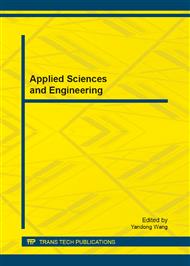p.547
p.553
p.558
p.564
p.571
p.577
p.585
p.590
p.596
Target Recognition in Complex Background with Optical Joint Transform Correlator
Abstract:
The optical joint transform correlator (JTC) has been used in target real-time recognition, but the interference of complex background has always been the difficult problem for recognition system, which limits its further development and application. In this paper the principle and experimental system of JTC are introduced. The interference of complex background is simulated and the optimization method is proposed to process the joint power spectrum to eliminate zero-order correlation peak. The analysis result shows that the method of power subtraction can enhance the output peaks and improve the recognition efficiency, particularly for target identification in complex background.
Info:
Periodical:
Pages:
571-576
Citation:
Online since:
September 2012
Authors:
Price:
Сopyright:
© 2012 Trans Tech Publications Ltd. All Rights Reserved
Share:
Citation:


